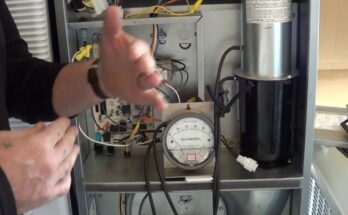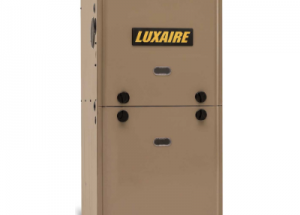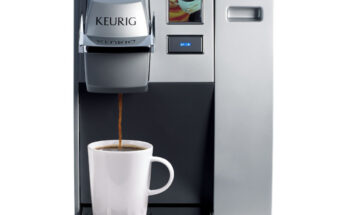For Kohler faucet troubleshooting, check for leaks and low water pressure first. Inspect aerators and cartridges for clogs.
Kohler faucets are known for their quality, but like any fixture, they can encounter issues over time. Common problems include leaks, low water pressure, and malfunctioning handles. Understanding how to troubleshoot these issues can save you time and money. Start by checking for visible leaks, which often occur around the base or spout.
Low water pressure might be caused by clogged aerators or cartridges, which are easy to clean or replace. Regular maintenance and prompt attention to minor problems can keep your Kohler faucet functioning smoothly for years. This guide will help you identify and resolve common issues effectively.
Leaky Faucet
A leaky faucet can be a major nuisance in your home. It wastes water and increases your utility bills. Understanding how to fix a leaky Kohler faucet can save you time and money.
Identifying The Source
First, you need to identify the source of the leak. This could be from the handle, the spout, or the base. Turn off the water supply before starting your inspection.
- If the leak is from the handle, the cartridge may be the issue.
- If it’s from the spout, the O-ring might be damaged.
- Leaks from the base could indicate a problem with the seal.
Replacing The O-ring
The O-ring is a common cause of faucet leaks. Replacing it is simple if you follow these steps:
- Turn off the water supply.
- Remove the faucet handle using an Allen wrench.
- Take out the old O-ring from the cartridge.
- Install a new O-ring of the same size.
- Reassemble the faucet and turn on the water supply.
Check for any leaks after you replace the O-ring. If the leak persists, you might need to inspect other parts.
Low Water Pressure
Experiencing low water pressure in your Kohler faucet can be frustrating. This issue can hinder daily activities like washing dishes or filling pots. Understanding the root cause can help you fix it quickly. This section will guide you through steps to troubleshoot low water pressure in your Kohler faucet.
Cleaning The Aerator
The aerator is a small screen that fits at the faucet tip. It mixes air with water, providing a steady stream. Over time, debris and mineral deposits can clog the aerator. This will reduce water flow. To clean it, follow these steps:
- Unscrew the aerator using pliers if needed.
- Disassemble the aerator and inspect each part.
- Soak the parts in vinegar for 30 minutes.
- Use a brush to remove remaining debris.
- Rinse all parts with water.
- Reassemble and screw the aerator back on the faucet.
Cleaning the aerator can often solve low water pressure problems. If the issue persists, check the supply lines.
Checking The Supply Lines
Supply lines connect your faucet to the home’s plumbing system. Kinks or blockages in these lines can reduce water pressure. Follow these steps to inspect the supply lines:
- Turn off the water supply valves under the sink.
- Disconnect the supply lines from the valves and faucet.
- Inspect the lines for kinks or damage.
- Flush the lines with water to clear any blockages.
- Reconnect the supply lines to the valves and faucet.
- Turn on the water supply valves and test the faucet.
If the supply lines are clear and the problem remains, consider checking other parts of the faucet or consult a professional.
Dripping Handle
A dripping faucet handle can be annoying and waste water. Luckily, fixing it is easy. This guide will help you troubleshoot and fix your Kohler faucet.
Tightening The Handle
The first step to fix a dripping handle is to tighten the handle. Sometimes, the handle becomes loose over time.
- Turn off the water supply to the faucet.
- Use a screwdriver to remove the handle screw.
- Tighten the screw using a wrench or pliers.
- Replace the handle and screw it back in place.
- Turn the water supply back on and check for drips.
Replacing The Cartridge
If tightening the handle does not stop the drip, you may need to replace the cartridge. The cartridge controls the water flow and can wear out over time.
| Steps | Details |
|---|---|
| 1. Turn off water | Turn off the water supply to the faucet. |
| 2. Remove handle | Unscrew the handle using a screwdriver. |
| 3. Remove cartridge | Use pliers to pull out the old cartridge. |
| 4. Install new cartridge | Insert the new cartridge in the same position. |
| 5. Reassemble handle | Screw the handle back in place. |
| 6. Turn on water | Turn the water supply back on and check for leaks. |
By following these simple steps, you can fix a dripping handle. This will save water and keep your Kohler faucet in good shape.

Credit: m.youtube.com
No Water Flow
Is your Kohler faucet not giving any water flow? This issue can be annoying and inconvenient. Below are some steps to help you get your water flowing again.
Checking The Shutoff Valves
The first step is to check the shutoff valves. These valves control water flow to the faucet. They are usually found under the sink. Ensure they are fully open.
- Locate the shutoff valves under the sink.
- Turn each valve counterclockwise to open it.
- Test the faucet to see if water flows.
Inspecting The Supply Hoses
The next step is to inspect the supply hoses. These hoses connect the shutoff valves to the faucet. Sometimes, they can get kinked or blocked.
- Turn off the shutoff valves.
- Disconnect the supply hoses from the faucet.
- Check for kinks or blockages in the hoses.
- Reconnect the hoses and turn on the valves.
- Check if the water flows properly.
If the issue still persists, consider contacting Kohler customer support for further assistance.
Temperature Control Issues
Experiencing temperature control issues with your Kohler faucet? This is a common problem that can be easily fixed. Often, these issues stem from the temperature limit stop or the thermostat. Below, we will guide you through adjusting the temperature limit stop and replacing the thermostat.
Adjusting The Temperature Limit Stop
The temperature limit stop controls how hot the water gets. If the water is too hot or too cold, this might need adjustment. Follow these steps to adjust it:
- Turn off the water supply to the faucet.
- Remove the handle by unscrewing it.
- Locate the temperature limit stop behind the handle.
- Adjust the stop by moving it clockwise for cooler water or counterclockwise for hotter water.
- Reattach the handle and turn the water supply back on.
Replacing The Thermostat
If adjusting the temperature limit stop does not work, the thermostat might be faulty. Replacing it may solve the problem. Here’s how to do it:
- Turn off the water supply.
- Remove the handle and trim plate.
- Locate the thermostat and remove it by unscrewing it.
- Install the new thermostat by screwing it in place.
- Reattach the trim plate and handle.
- Turn the water supply back on and test the faucet.
Following these steps can resolve most temperature control issues in Kohler faucets. Proper maintenance ensures a longer lifespan for your faucet.

Credit: www.reddit.com
Noisy Faucet
A noisy faucet can disrupt the peace in your home. Understanding the cause of the noise is key. This guide will help you identify and fix the issue.
Identifying The Noise Source
First, determine the noise type. Is it a whistling, hammering, or squeaking sound?
- Whistling: Often caused by a worn-out washer.
- Hammering: Indicates high water pressure.
- Squeaking: Points to friction in the faucet handle.
Check the water supply lines. Loose or damaged lines can cause noise. Tighten or replace them as needed.
Replacing Worn Out Parts
Replacing worn-out parts can silence a noisy faucet. Here are the steps:
- Turn off the water supply.
- Disassemble the faucet handle.
- Inspect washers, O-rings, and cartridges.
- Replace any worn or damaged parts.
- Reassemble the faucet.
- Turn on the water supply and test.
Use the table below to find common parts that may need replacing:
| Part | Common Issues | Solution |
|---|---|---|
| Washer | Whistling noise | Replace with new washer |
| O-ring | Leaking and squeaking | Replace with new O-ring |
| Cartridge | Inconsistent water flow | Replace with new cartridge |
Difficult Handle Operation
Is your Kohler faucet handle difficult to operate? This common issue can be frustrating. Let’s explore some troubleshooting steps to fix it. We’ll cover lubricating the handle and inspecting for debris.
Lubricating The Handle
The faucet handle might be hard to move due to lack of lubrication. Follow these steps to lubricate the handle:
- Turn off the water supply to the faucet.
- Remove the handle using a screwdriver.
- Apply a small amount of plumber’s grease to the handle’s moving parts.
- Reattach the handle and turn the water supply back on.
Lubrication helps the handle move smoothly. Regular maintenance keeps it in good condition.
Inspecting For Debris
Debris can also cause the handle to be difficult to operate. Follow these steps to inspect and clean the faucet:
- Turn off the water supply.
- Remove the handle and inspect for any dirt or buildup.
- Use a soft brush to clean the handle and surrounding area.
- Reassemble the handle and turn the water supply back on.
Cleaning the handle removes any blockages. It ensures smooth operation.

Credit: www.kohler.com
Faucet Installation Problems
Installing a Kohler faucet can sometimes lead to issues. These problems are often due to misalignment or loose connections. This guide will help you troubleshoot these common installation problems.
Ensuring Proper Alignment
Proper alignment is crucial. Misaligned faucets can cause leaks and uneven water flow.
- Check the faucet base. Make sure it sits flat on the sink.
- Align the faucet handle with the spout. This ensures smooth operation.
- Use a level tool. Confirm the faucet is straight and not tilted.
Tightening Connections
Loose connections lead to leaks. Tighten all connections securely.
- Inspect all supply lines. Make sure they are tightly connected.
- Use a wrench. Tighten the nuts connecting the faucet to the sink.
- Check for leaks. Turn on the water and look for drips.
| Connection Type | Tool Needed |
|---|---|
| Supply Lines | Adjustable Wrench |
| Mounting Nuts | Basin Wrench |
Make sure all connections are tight. This prevents leaks and ensures proper operation.
Frequently Asked Questions
How Do You Reset A Kohler Faucet?
To reset a Kohler faucet, turn off the water supply. Remove the handle and cartridge. Reassemble and test.
What Is The Most Frequent Failure In A Typical Faucet?
The most frequent failure in a typical faucet is a worn-out washer or cartridge, causing leaks or drips.
Why Would A Faucet Suddenly Stop Working?
A faucet may stop working due to clogged aerators, faulty valves, or disrupted water supply. Check these components first.
What Model Kohler Faucet Do I Have?
Check the faucet for a model number, usually found on the spout, handle, or under the sink. Alternatively, visit Kohler’s website and use their faucet identification tool for assistance.
Conclusion
Fixing a Kohler faucet can be straightforward with the right guidance. Follow the steps outlined for common issues. Regular maintenance can prevent most problems. Keep your faucet functioning smoothly by addressing issues promptly. With these tips, your Kohler faucet will remain reliable and efficient for years to come.



